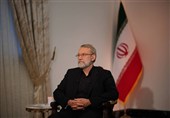UN Report Highlights Economic Impact of Gaza Blockade
TEHRAN (Tasnim) – A report from the United Nations Conference on Trade and Development (UNCTAD) released on Wednesday sheds light on the consequences of the Israeli blockade in the Gaza Strip, which has been in place since 2007.
The report points out that this prolonged blockade has led to a significant decline in real GDP per capita, a sharp rise in unemployment, and increased poverty in the region.
The report reveals that from 2006 to 2022, the population of Gaza increased by 61%, but GDP grew by just 1.1%. During this time, real GDP per capita dropped by 27%, falling from $1,994 in 2006 to $1,257 in 2022. In contrast, the West Bank saw figures of $2,923 and $4,458, respectively. Additionally, the report highlights that the share of Gaza in the Palestinian economy decreased from 31% to 17.4%, exacerbating regional disparities in living conditions.
During the same period, the labor force in Gaza expanded by 112%, resulting in a 157% increase in the number of unemployed workers. Unemployment surged from 34.8% to 45.3%, one of the highest rates globally. The report emphasized the adverse effects of this situation, stating, "Population and labor force growth and the dearth of jobs have resulted in lost generations of impoverished, unskilled, and deskilled workers."
In 1994, at the inception of the Palestinian National Authority, Gaza's standards of living were comparable to the West Bank, with its GDP per capita at 97% of the West Bank's. However, this ratio plummeted to 44% with the imposition of restrictions and closures in 2007, reaching a low of 27.7% in 2021.
The report underscores the structural distortion of Gaza's economy due to movement restrictions, limited access to imports, the destruction of productive assets, and its isolation from domestic and global markets. This has resulted in a decreased share of agriculture and manufacturing in the economy, dropping from 32% in 1995 to 17.6% in 2022.
The economic damage caused by occupation extends to all sectors, with factors such as the loss of land and natural resources to settlements, import restrictions, and barriers to movement raising production, transaction, and trade costs. This, in turn, hampers the competitiveness of all Palestinian producers.
UNCTAD predicts a gloomy economic outlook for Gaza, attributing it to "occupation-related constraints" as the primary hindrance to economic development in the Palestinian territory. The International Monetary Fund estimates that the impact of easing occupation-related restrictions would be approximately three times more significant than improvements in the Palestinian business climate, electricity, and water supply.






